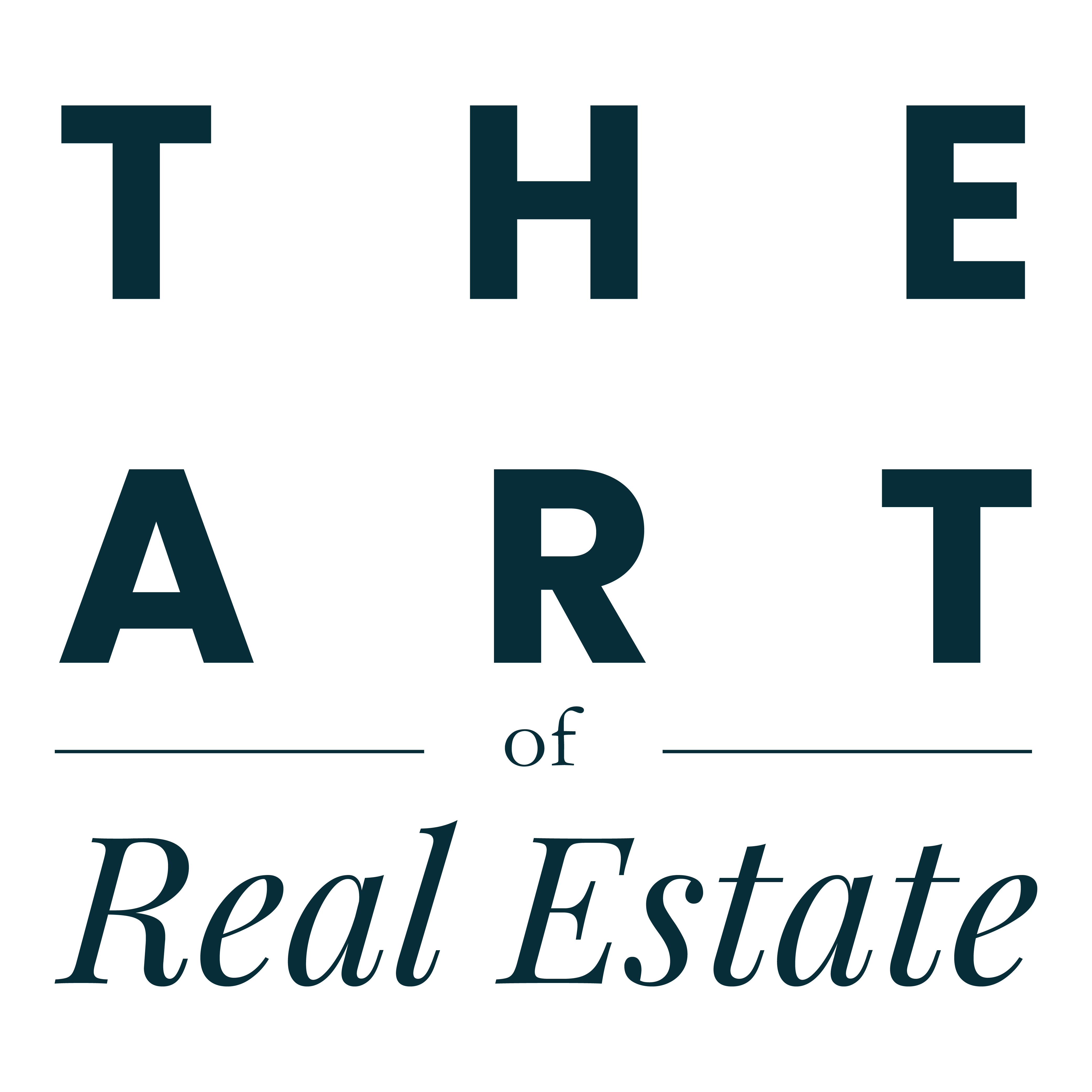No Downpayment? USDA Loans May Be The Answer.
What is a USDA loan?
The USDA home loan program is one of the best-kept secrets in the home buying market today.
This zero-down, 100% financing home loan is sponsored by the United States Department of Agriculture to promote homeownership in less-dense communities across the U.S.
Just because it says “rural,” it doesn’t mean the property has to be located in the middle of nowhere. You’d be surprised at where some eligible properties are.
In fact, a full 97% of U.S. land mass is eligible for USDA financing, representing 109 million people -- about one-third of the U.S. population. It's very likely that a property near you qualifies.
What is the process involved in getting a USDA Loan?
Getting a USDA loan program is not that much different than getting an FHA loan or a conventional mortgage. You go through all the steps and processes that any other home buyer goes through with their mortgage company.
Like FHA, a government agency sponsors the program, but local lenders handle 100% of the transaction. That means we handle everything for you. From taking your application to issuing the final approval. USDA puts a final stamp of approval on the loan, and even that is handled by the lender. Below you’ll find a quick outline of the USDA process:
- Apply: You’ll give your loan officer your information just like applying for any other loan. Credit will be pulled, information about your income and your assets will be gathered and we’ll make sure you qualify on all fronts, including the income limit requirements for the USDA.
- Find a house: If you’re not already working with a trusted Real Estate agent, we’ll make sure to get you in contact with the best in the business. At this point you’ll begin your search. You’ll craft your offer with the Realtor using our financial strategy and we’ll get your new home under contract.
- Full lender approval: At this point, we’ll move the loan into process, order appraisal and title, and submit your file for underwriter review.
- Off to the USDA for final approval: Once we’ve cleared all conditions, we’ll send your file to the USDA office for final approval and guarantee from the USDA.
- Closing: We will have set up the closing with the attorney of your choosing and it’ll be the attorney who oversees signing of all official closing paper work. The house is now yours! .
Is a USDA loan right for me?
USDA guaranteed loans aren’t right for every buyer. But, any first-time or repeat buyer looking for homes outside of major cities should check their eligibility for the program.
Here are a few advantages:
- Lower down payment than conventional or FHA financing
- Lower mortgage insurance than conventional or FHA loans
- More lenient credit score requirements than for conventional loans
- Unlike VA loans, there is no military service requirement
- The only zero-down loan on the market besides the VA mortgage
When USDA is not the right choice: If you want to buy a home close to the downtown core of a major city, USDA is not right for you. Additionally, if you have a high income for your area, or 20% down available, you will not qualify for USDA. This loan is reserved for those who need it most.
Am I eligible for a USDA home loan?
The two primary factors for USDA home loan eligibility: the property and the home buyer.
1. USDA property eligibility
Geographic areas for USDA loans: The home must be located within a USDA-eligible area. The USDA website contains interactive maps with which you can pinpoint an address or take a wider view of a region.
Definition of a rural area: To be eligible, a home must be in a rural area. But you might be surprised at what is considered rural. Generally, cities and towns with a population less than 20,000 qualify, but bigger cities are eligible if they are “rural in character” or don’t have good access to mortgage credit.
Plus, property eligibility maps haven’t been significantly updated in more than 15 years. Many surprisingly populous areas across the U.S. qualify. What was once considered a rural area might now be a significant population center.
Property standards: Your lender will order an appraisal on the property which will ensure it is worth what you’re paying. The appraisal report also verifies the home is livable, safe, and meets USDA’s minimum property requirements. Any safety or livability issues will need to be corrected before loan closing.
Property types: Contrary to popular belief, USDA loans are not meant to finance farms or large acreage properties. Rather, they are geared toward the standard single-family home. You can also finance some condominiums and townhomes with the program.
Occupancy: The home you are buying must be your primary residence, meaning you plan to live there for the foreseeable future. Rental properties, investment properties, and second home purchases are not eligible for the USDA loan program.
USDA home loan map: USDA home loans are available in many suburban areas around the country, often just outside major metropolitan areas. Here is a link to the USDA eligibility map so you can see if your area will qualify.
SDA, home buyers can purchase immediately and take advantage of increasing home values.
2. USDA buyer eligibility
The lender will verify USDA rural development loan eligibility in the same way as for any other home loan program. Your credit, income, and bank account information will be compared to current guidelines for USDA loans.
First-time home buyer: You do not need to be a first-time home buyer. However, you may not own an adequate, livable property reasonably close to where you are buying.
USDA income limits: USDA requires an income of 115% or less of your region’s median income. For instance, if your area median income is $50,000, you could make up to $57,500 and still qualify.
Increased limits are available to families of five or more.
Keep in mind that the USDA lender will count your entire household income toward limits. For instance, if you have a working teenage son, the lender would factor his income into household income totals, even if he is not on the loan.
Loan limits: There are no stated mortgage limits for USDA loans. Rather, the applicant’s income determines the maximum loan size. The USDA income limits, then, ensure reasonable loan sizes for the program.
Asset limits: If you have 20% down, you may not use USDA financing. According to USDA guidelines, this loan is reserved for those who can't qualify for other mortgage types, such as conventional loans.
Employment: You typically need a 24-month history of dependable employment to qualify, plus adequate income from said employment. However, schooling in a related field can replace some or all of that experience requirement.
Citizenship: You must be a U.S. citizen or have permanent resident status, be a non-citizen national or qualified alien to qualify for the USDA program. Valid evidence of residency status will be required.
Direct loan vs guaranteed loan: USDA offers two types of loans: direct and guaranteed. Guaranteed loans are offered by private lenders and backed by USDA. Direct loans have more stringent requirements, like very low income limits. USDA offices issue these loans directly to consumers.
USDA mortgage fees for 2018
The USDA mortgage borrowers will pay very low fees compared to what they would pay for other low down payment loans.
Mortgage insurance: It requires an upfront fee of 1.0% of the loan amount, and a mortgage insurance fee equal to 0.35% of the loan balance per year.
For a $200,000 loan, that’s $2,000 upfront and $58 per month.
That’s a big discount compared to the FHA Mortgage Insurance Premium, or MIP. An FHA mortgage loan would require $3,500 upfront and $141 per month for the same loan. (Another big advantage: FHA requires 3.5% down, and USDA requires no down payment).
USDA mortgage insurance is also probably about half as expensive as private mortgage insurance, or PMI, for a conventional / conforming loan offered by Fannie Mae and Freddie Mac.
The USDA upfront fee can be rolled into the loan amount and does not have to be paid in cash.
USDA closing costs: There are no additional costs to a USDA loan compared to other loan programs. And just like any other mortgage, the closing costs can be negotiated as part of your contract to be paid by the seller.
The USDA mortgage is definitely not for everyone but it should definitely be considered by everyone who is looking to purchase a home without any down payment availability. Rates are as low as any other product or program and the process is much easier than many assume it is. Ultimately a solid financial plan that you and your mortgage professional put together will be one of the deciding factors about whether the Rural Housing Home Loan is right for you.
About the Author: Clint Hammond is the Branch Manager for Mortgage Network's Columbia operations. He is a Wofford graduate, Irmo raised and resides down town. He has been specializing in the Columbia mortgage industry for the past 13+ years. Clint is also a Certified Mortgage Planner, so he is able to see what your life goals are, and creates a specialized mortgage package for your unique situation and goals. To learn more about Clint and his team you can click this link.
 |  |
.png)
.png)
.png)
.png)
